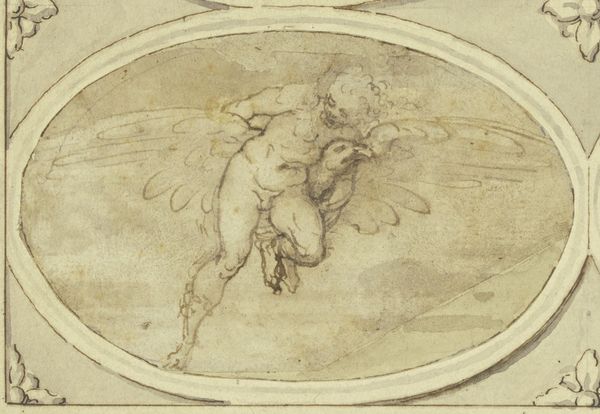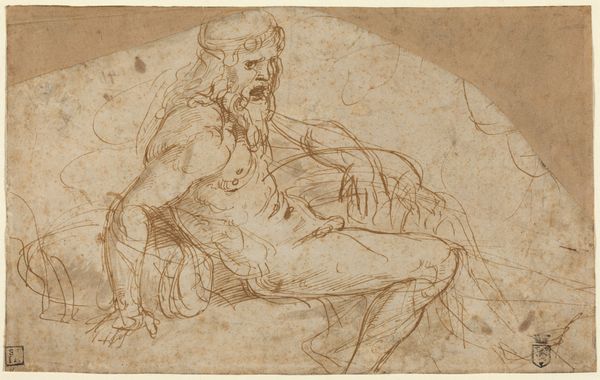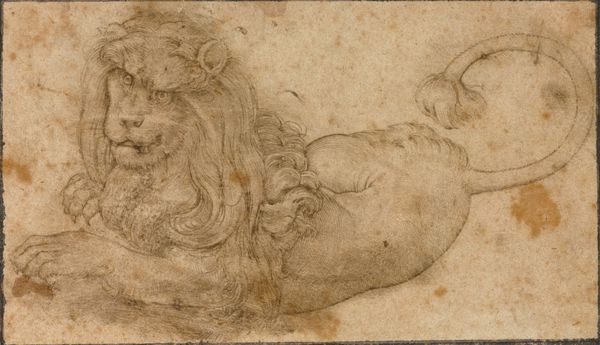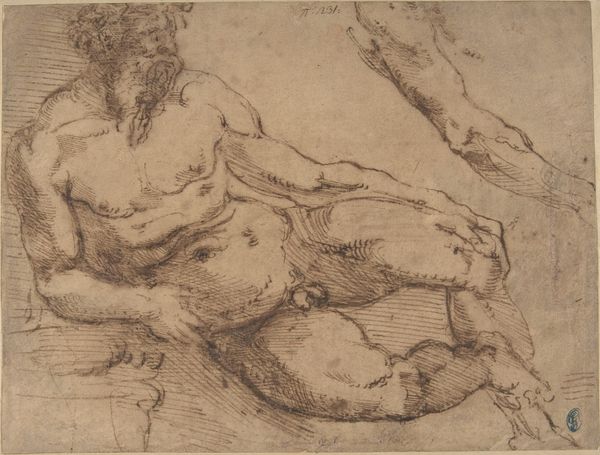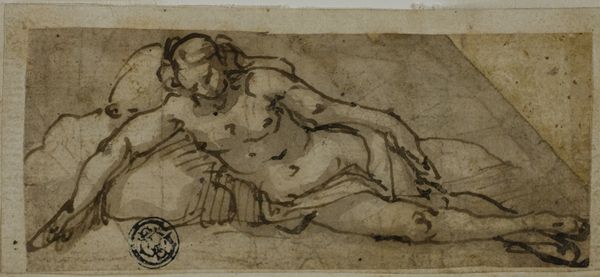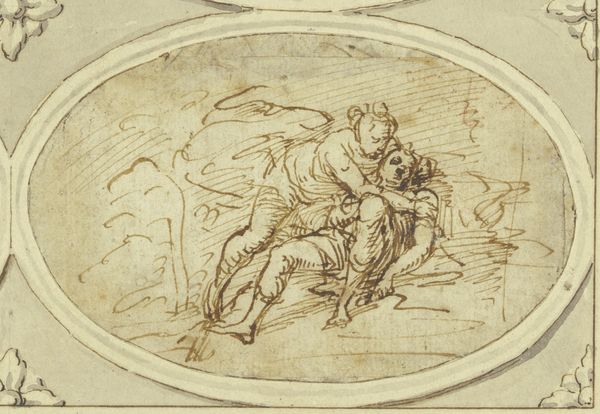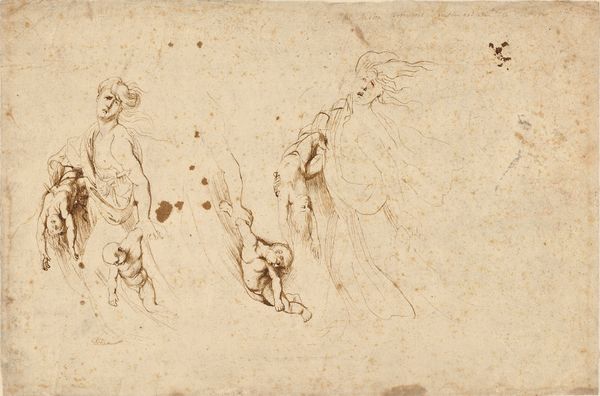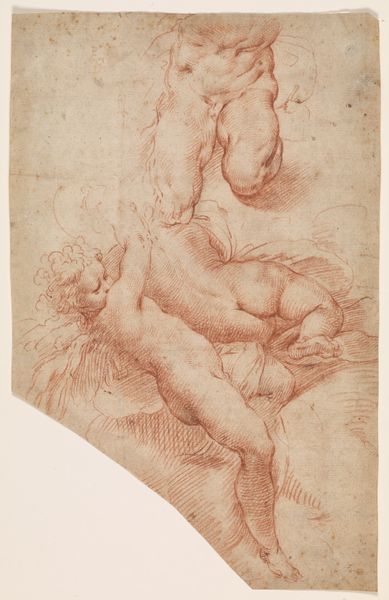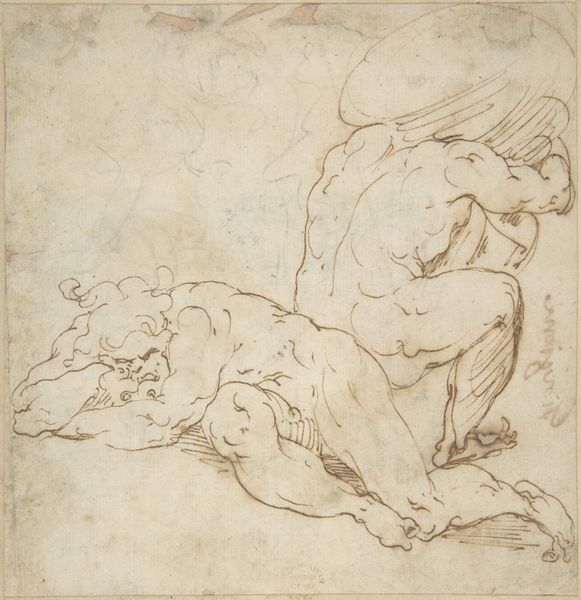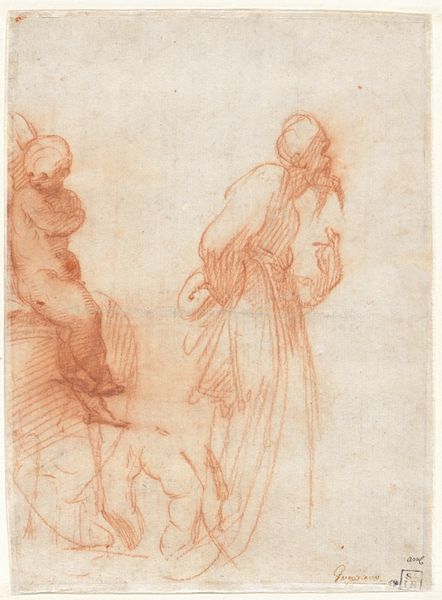
drawing, print, paper, chalk, pen
#
drawing
#
allegory
#
baroque
#
ink painting
# print
#
pencil sketch
#
figuration
#
paper
#
chalk
#
pen
#
history-painting
#
italian-renaissance
Dimensions: 175 × 180 mm
Copyright: Public Domain
Curator: Annibale Carracci's drawing, "Satyr and Goat," thought to be made sometime after 1600. What strikes you most about it? Editor: Immediately, I'm caught by the tenderness. Despite the wildness we associate with satyrs, there's a surprising gentleness in how he holds the goat. It's like a secret, private moment rendered in delicate red chalk. Curator: It’s a beautiful contrast, isn't it? Carracci was a master of imbuing classical figures with a kind of humanity that’s quite touching. In terms of social context, there is the interesting subtext to satyrs: hypermasculine creatures, though symbols of excess. The placement alongside an animal might have carried a certain sexual connotation depending on the social moment. Editor: Absolutely. And I wonder if Carracci is deliberately subverting some of those expectations. There is no frenzy in this image, just an odd companionship. We cannot divorce art from politics, and this can even speak to what we might classify as masculine today. Curator: Perhaps, even in the very early 17th century, that blurring of boundaries was part of the work’s appeal. Editor: The composition itself guides the eye, doesn't it? From the goat's curling horns down the satyr's muscular back, to the soft texture implied in the fur. It feels quite immediate despite the history behind it. Curator: It’s hard to believe this piece is well over 400 years old! Looking at this, what do you feel our responsibility is, viewing an image that has been shaped and seen for centuries before us? Editor: To avoid imposing our own narrow interpretation, for one thing! The drawing is more about the layered and subjective relationships of art and perception. Our job, at this point, is simply to hold it—its possibilities, anxieties, its open future. Curator: Well said. And to remember that art can reveal, and also invite us to imagine other perspectives. Editor: Leaving room for both empathy and understanding. Precisely.
Comments
No comments
Be the first to comment and join the conversation on the ultimate creative platform.

